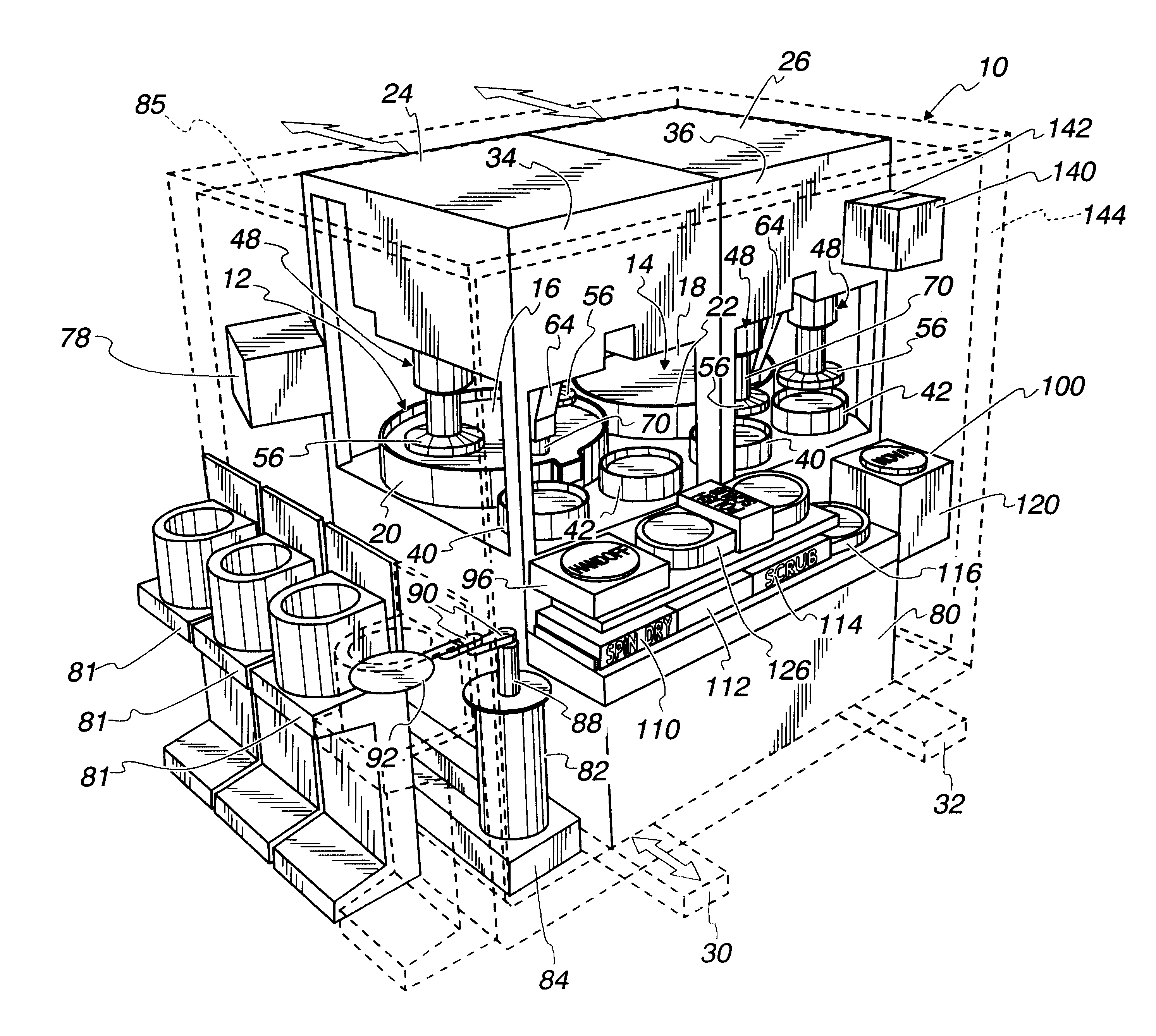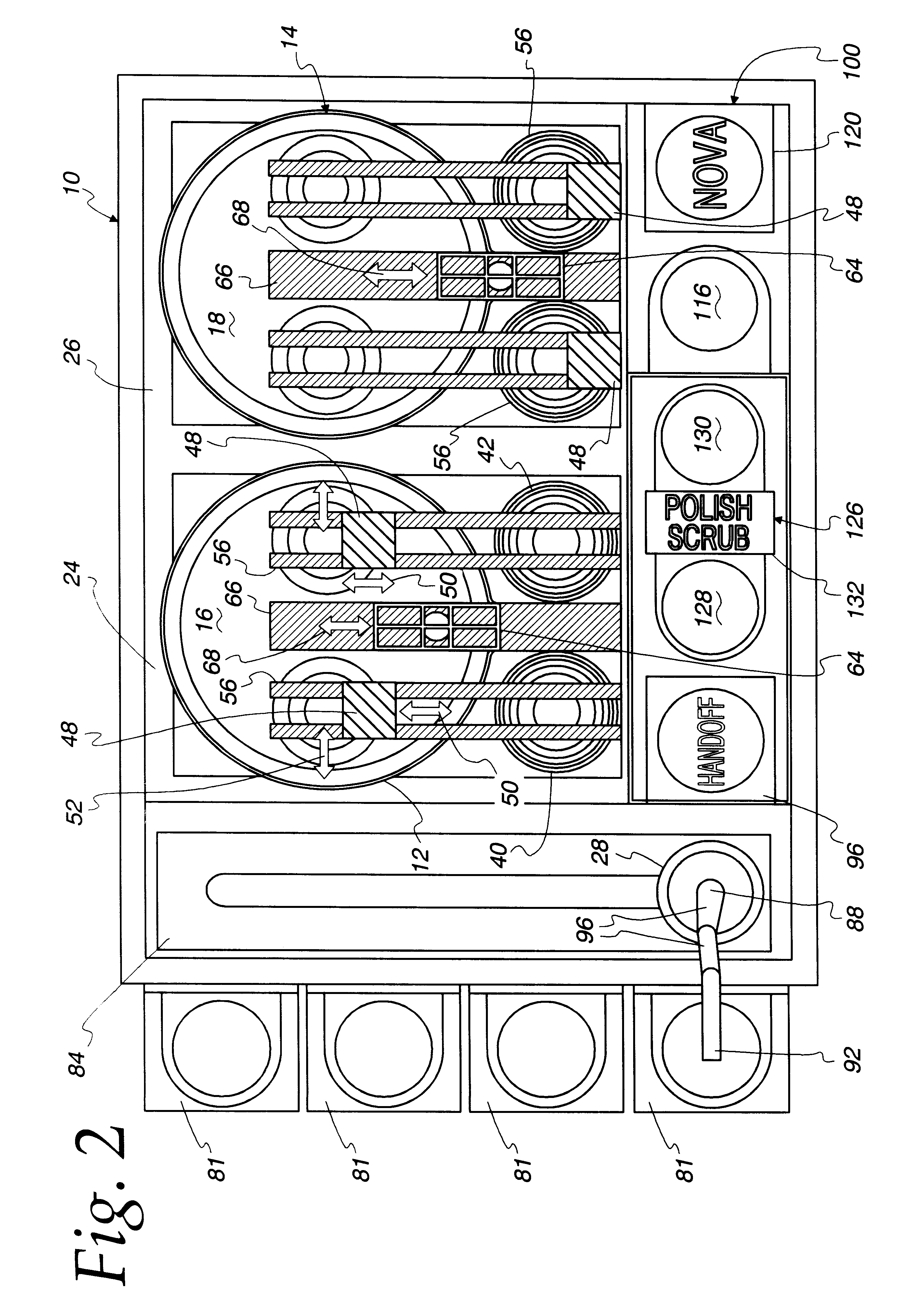Arrangements for wafer polishing
a technology for polishing and wafers, applied in the direction of grinding feeders, manufacturing tools, lapping machines, etc., can solve the problems of unprocessed semiconductor wafers with a substantial cost, raw, fragile semiconductor wafers, etc., and achieve the effect of increasing flexibility of operation and intensive use of polishing surfaces
- Summary
- Abstract
- Description
- Claims
- Application Information
AI Technical Summary
Benefits of technology
Problems solved by technology
Method used
Image
Examples
Embodiment Construction
Referring now to the drawings, and initially to FIGS. 1 and 2, wafer processing apparatus according to principles of the present invention is generally indicated at 10. As will be seen herein, apparatus 10 is provided for performing a number of varied operations in a commercial wafer production environment. Apparatus 10 include two platen arrangements 12, 14 which include polishing surfaces 16, 18 and upstanding outer walls 20, 22 rising slightly above the working surfaces 16, 18 for slurry containment. The platen arrangements 12, 14 are located within respective polishing modules 24, 26. The modules 24, 26 are separate and independent from one another and are connected with a "backbone" or "docking" structure enclosed in a cabinet 80. Preferably, the "backbone" includes a framework (with valves and switches) supporting a plurality of flexible hoses for gas and liquid, and flexible cables for electrical power and electrical signals. The hoses and cables are connected to nearby modul...
PUM
| Property | Measurement | Unit |
|---|---|---|
| Pressure | aaaaa | aaaaa |
Abstract
Description
Claims
Application Information
 Login to View More
Login to View More - R&D
- Intellectual Property
- Life Sciences
- Materials
- Tech Scout
- Unparalleled Data Quality
- Higher Quality Content
- 60% Fewer Hallucinations
Browse by: Latest US Patents, China's latest patents, Technical Efficacy Thesaurus, Application Domain, Technology Topic, Popular Technical Reports.
© 2025 PatSnap. All rights reserved.Legal|Privacy policy|Modern Slavery Act Transparency Statement|Sitemap|About US| Contact US: help@patsnap.com



